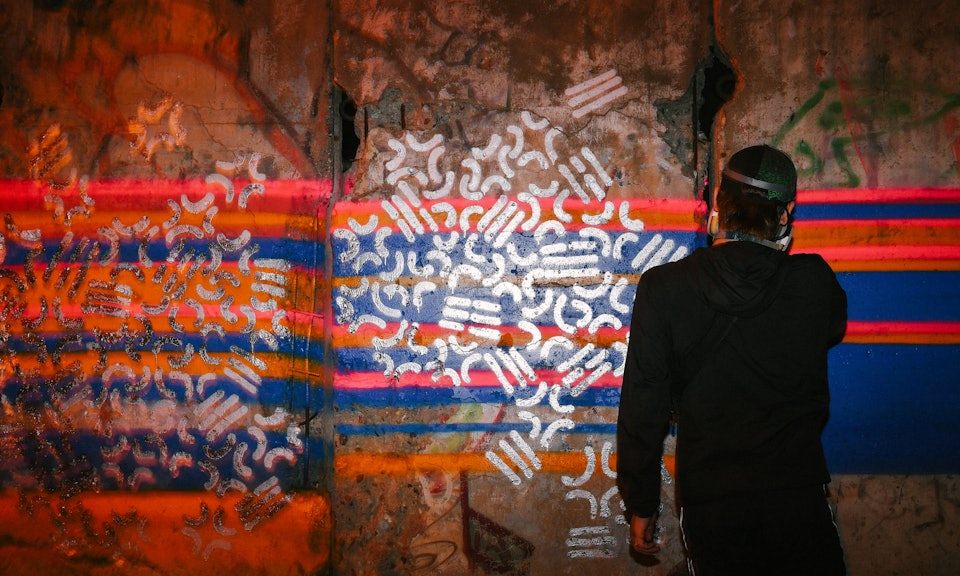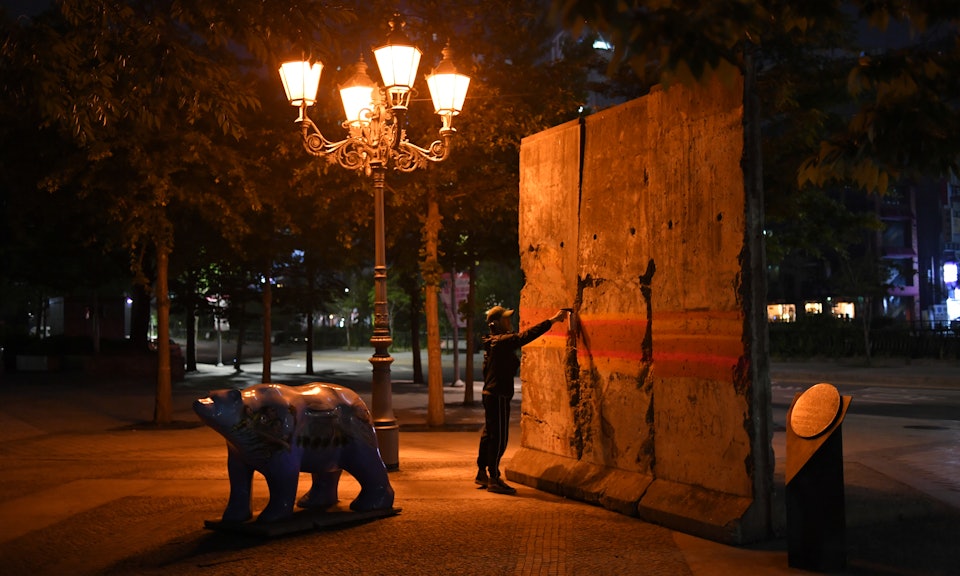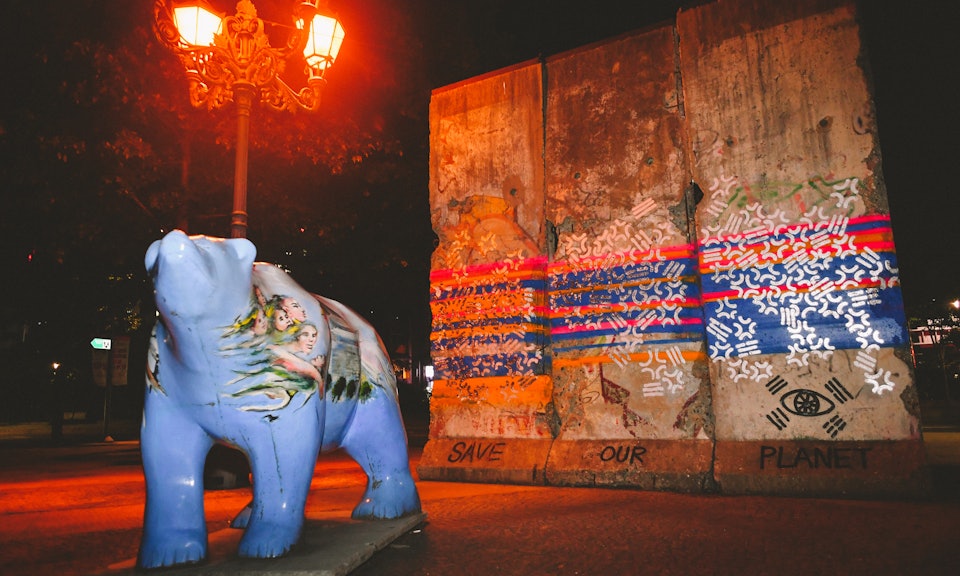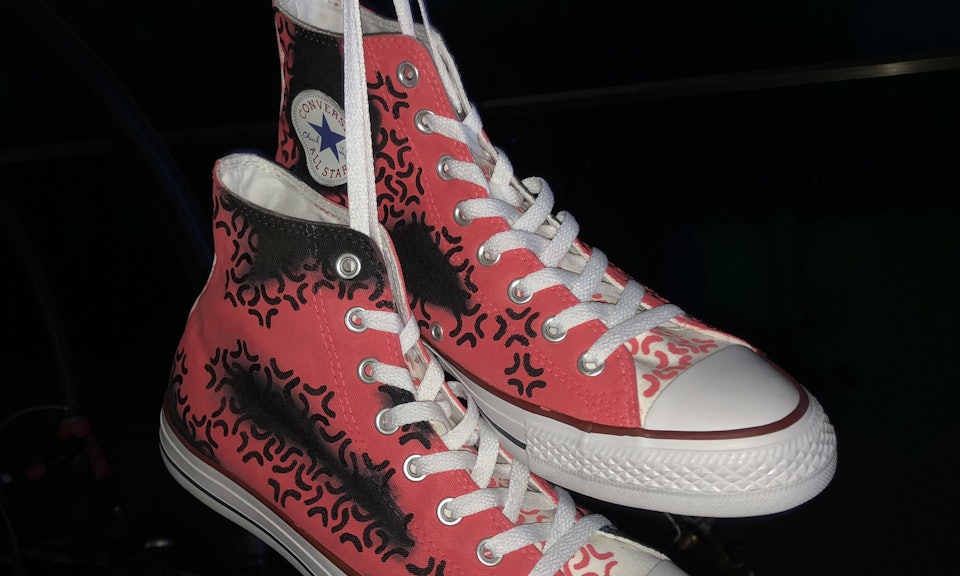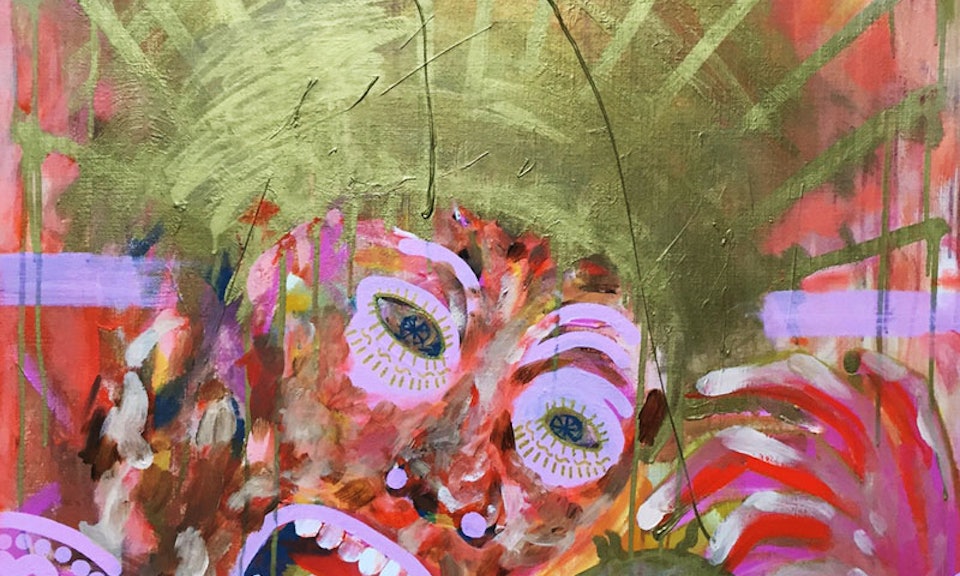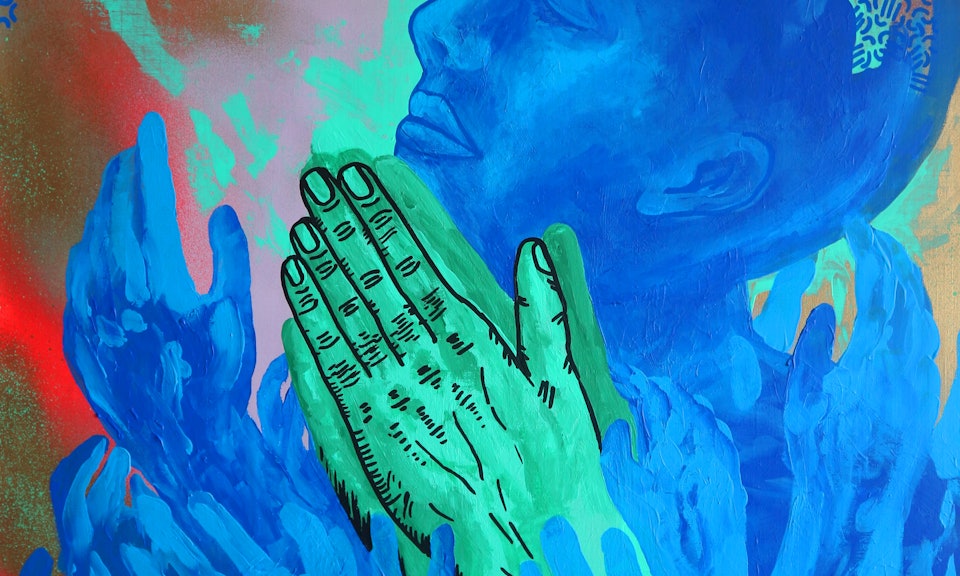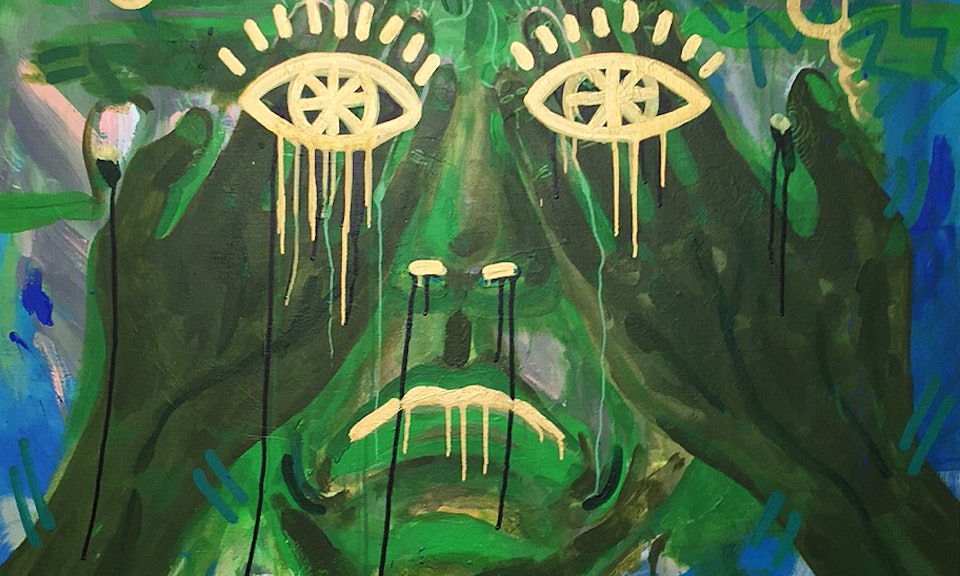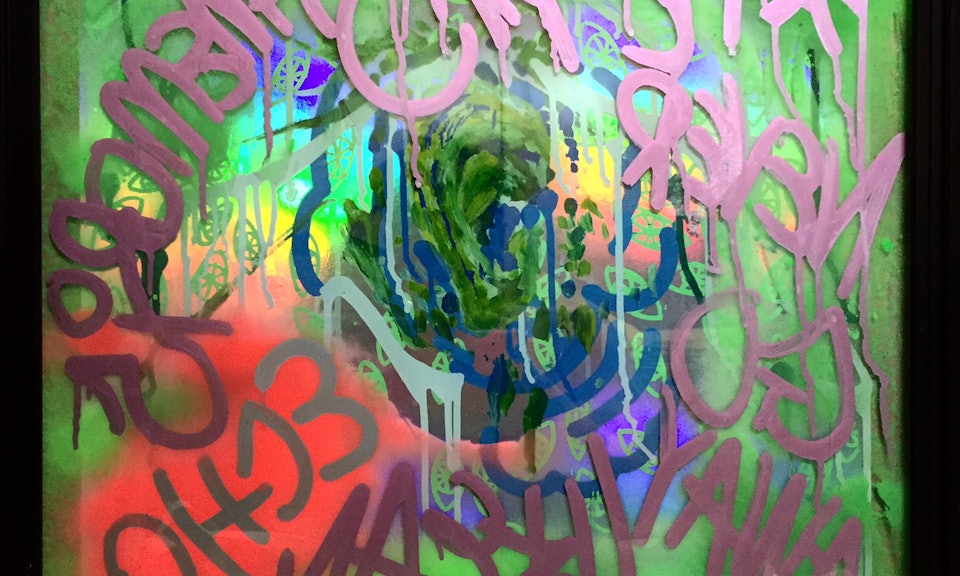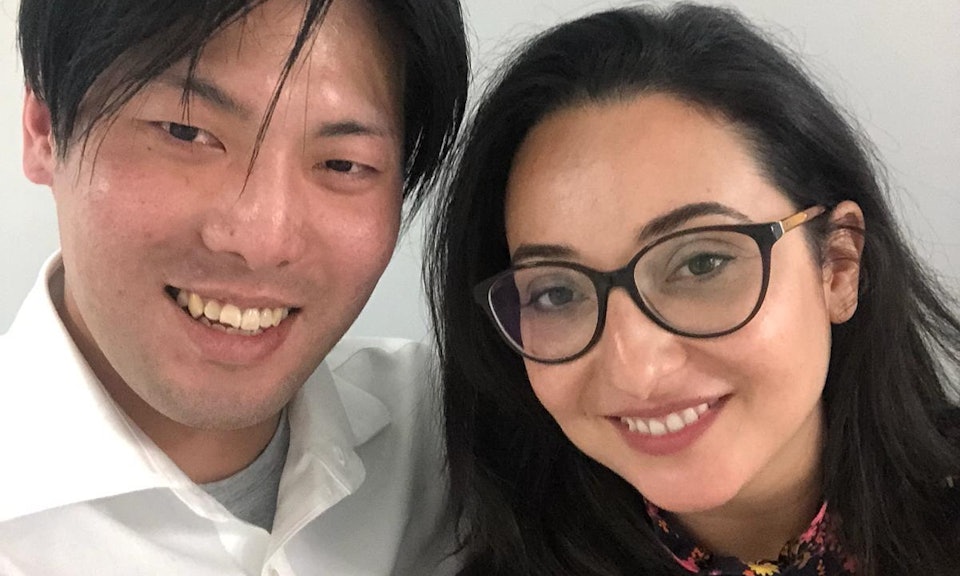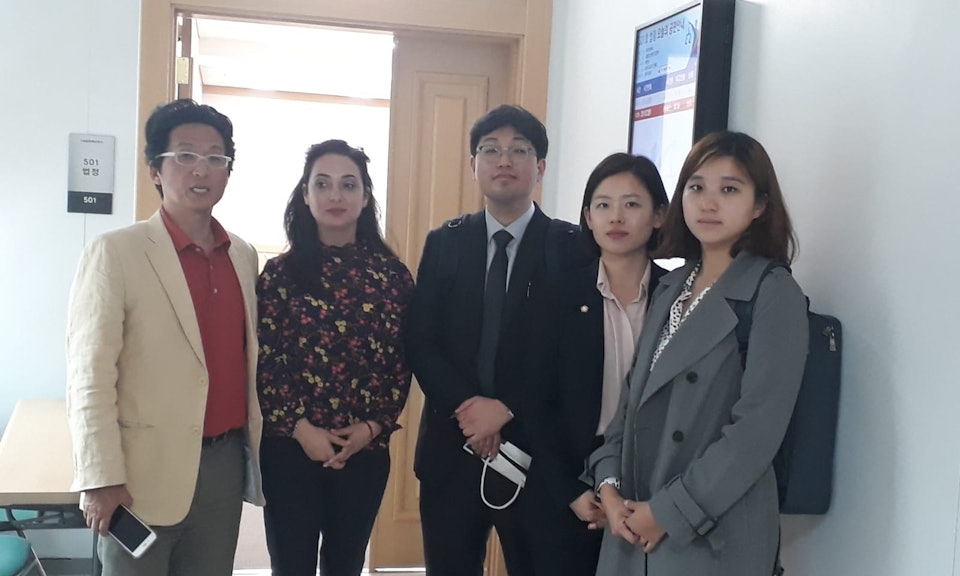Artist Profile
Taeyong Jeong
South Korea
Status: Released

Taeyong Jeong is a visual artist and painter from Anyang, South Korea. He is also known by the alias HIDEYES, a representation of what Jeong calls “the eye of the mind.”
“HIDEYES is not a mere vision. It contains a message about the ‘mind’s eye.’ What you see is not always the truth”, wrote Jeong on his website. Jeong relies on bold colors to express himself through a variety of creative media, including illustration, clothing, live painting, and calligraphy. In addition to visual art, he also performs poetry.
Jeong has organized several artistic projects and exhibitions, including Second Wind in 2018, Don’t get me wrong, Street Lumination, and Face with myself in 2017. Thanks to collaborations with Disney, RedBull, Goose Island, Puma, and Vans, his work has gained international recognition.
Jeong uses symbols and slogans to deliver messages about the complexity of truth and the importance of artistic freedom. His character TWINGEE, for instance, represents what he calls “street culture freedom” and embodies his own personality and appreciation for artistic freedom and graffiti. Besides, Jeong uses “Revealeyes” as a slogan that represents the eyes of the visual, evoking a call for viewers to look outside and thereby, spurring them to look beyond the obvious and mundane. According to Jeong, “Revealeyes wants to talk about the importance of psychology and society.”

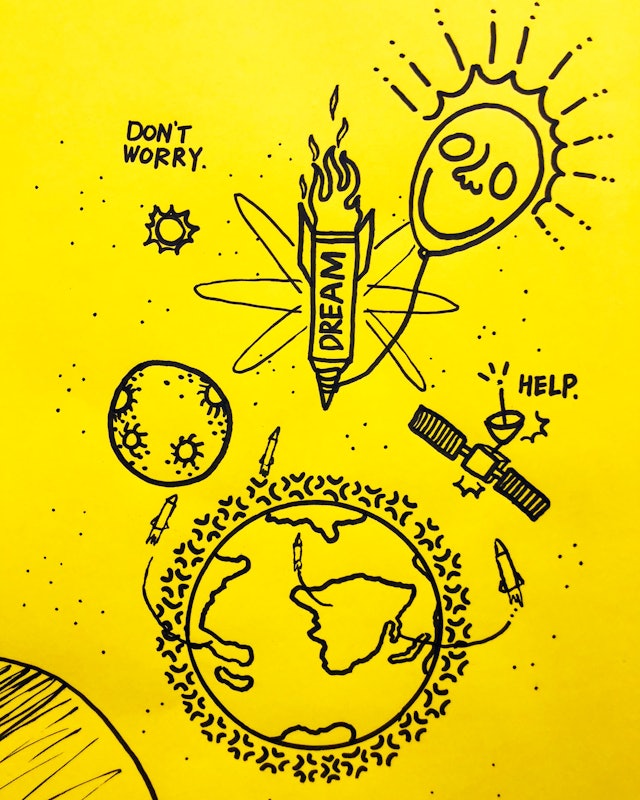
Jeong utilizes graffiti to promote political discussion, stimulating the free exchange of ideas and opinions that are vital for South Korea as a democratic society. His graffiti evokes a genuine desire for peace and unification between North and South Koreas and allows the Korean public to take part in a public conversation on cultural, political and social concepts.
With these themes of reunification in mind, Jeong selected his most high-profile canvas yet: the Berlin Wall.
When the mayor of Berlin, Klaus Wowereit, gifted the Berlin Wall to the city of Seoul in 2005, he demonstrated a similar interest in the unification of the two Koreas, calling the wall a sign of friendship and solidarity. Similarly, in his book Image Critique and the Fall of the Berlin Wall, Sunil Manghan quotes Sigrid Mayer, who underscored the importance of the Berlin Wall as a visible sign and symbol— "In the case of the Berlin Wall, we find an unusual situation of two different addresses or audiences because the Wall speaks with a Janus' face. The message to the East is ‘You cannot and must not go out while the message to the West is You cannot and must not come in.' The wall per se is a symbol of separation, inclusion, and exclusion.”
The Western side of the Berlin wall had a long history of artists expressing their discontent through graffiti murals. Begun by German activists in the 1970s, artists protested against the political division of Germany by painting slogans and graffiti on the wall. Pop Artist Keith Haring was among the many prominent artists who painted his vision of a unified Germany on the wall in 1986. While this form of resistance was technically illegal, it seems to have been eventually accepted by the authorities, proving that it is possible to make a distinction between graffiti murals as pointless vandalism and graffiti as a public art form.
Adding his own form of resistance to this historical protest movement on June 6, 2018, Jeong spray-painted the concrete segments of the Berlin wall by covering them with fluorescent stripes and white patterns of the Korean flag. At the bottom, he wrote: "SAVE OUR PLANET." He intended to honor Korean Memorial Day and celebrate the April 2018 Inter-Korean Summit, a significant move to achieve reconciliation between North and South Korea. Korea’s North-South relations have become an even more pressing social issue since President Moon Jaein hosted the North-South summit for the first time in 11 years. However, Jeong did not request permission for this work of art and was arrested and charged with destruction of public goods on August 27, 2018. The Prosecutor’s Office in Seoul has suggested a prison sentence of one year.
Jeong believes his case has not received the attention it merits from the Korean media. In the limited coverage available, his intentions have been misrepresented—news reports claim that he damaged the Berlin Wall as public property, a "damage" that requires compensation through trials and a fine of $2637.83 U.S. dollar. “I became the prey of the press, and the criticism of public opinion that runs like a hyena,” said Jeong. He tried to reach out to resources within Korea such as Seoul Welfare Foundation but received no response. It was not also possible for him to find a lawyer because he could not afford the expenses. Jeong is now calling for the international community to protect his right to artistic expression. He is seeking residency where he can freely express his artwork internationally and nationally.
Jeong painted over the Berlin wall with courage and innovation because graffiti itself is a free and rebellious form of art. It creates and recreates itself, thereby allowing Jeong to innovate continuously. “In the ephemeral and ungoverned world of graffiti, if one paints over another's work, the new graffiti must be better than what stood before. And this is as close to a law as there is; a practice called toying”, said human rights lawyer, Andra Matei, the founder and director of Avant-Garde Lawyers.
The Korean authorities asked Jeong to erase his work. He respectfully responded to their demand, yet he was sad; “Today I erased the graffiti. But in fact, it was the graffiti that erased me”, wrote Jeong to human rights lawyer, Andra Matei.
Jeong's trial took place on April 23. The artist was found guilty and received a fine of $5,000.
By Baha’ Ebdeir, April 2019. Baha’ is a Human Rights major with a Society and English Literature minor at Al-Quds Bard College in Palestine and studied abroad with the Bard Globalization and International Affairs Program in New York City.
